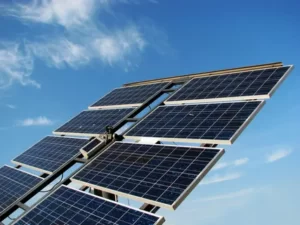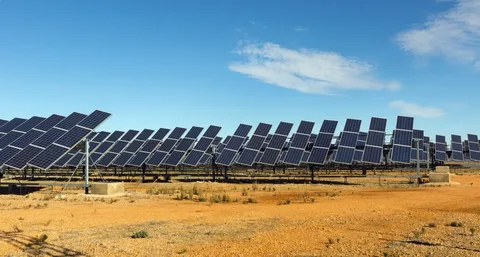For anyone who’s looking to get off the grid, a stand-alone power system may be a viable option. But what is a Stand Alone Solar System, and how does it work? In this blog post, we’ll be exploring the different components of a stand-alone power system and the technology behind it. We’ll also discuss the various advantages and disadvantages of these systems, as well as their potential applications. So if you’ve ever been curious about how stand-alone power systems work, read on!
What is a Stand-Alone Solar System?
A stand-alone solar system is a self-sufficient power system that is not connected to the traditional power grid. It consists of a set of solar panels, a charge controller, batteries, and an inverter. Stand-alone solar systems are typically used in remote locations where the cost of running power lines to connect to the grid is too high, or where there is no grid connection available. They are also popular among off-grid living enthusiasts who want to be completely independent of the utility companies.
The solar panels collect energy from the sun and convert it into electricity, which is then stored in the batteries. The charge controller ensures that the batteries are charged correctly and that the energy produced is not wasted. The inverter converts the DC power stored in the batteries into AC power, which can be used to power household appliances.
Stand-alone solar systems come in a variety of sizes, from small systems that can power a single appliance to large systems that can power an entire house. They can be used in both residential and commercial settings, as well as for outdoor activities like camping and boating.
In summary, a stand-alone solar system is a power system that is not connected to the traditional power grid. It consists of solar panels, a charge controller, batteries, and an inverter. It is used in remote locations where the cost of connecting to the grid is too high or where there is no grid connection available.
What is a Stand-Alone Power System?
A Stand-Alone Power System (SAPS) is an off-grid energy solution that enables users to generate, store and consume their own power without relying on traditional power grid systems. Essentially, a stand-alone power system operates independently of any external energy source, which makes it an ideal solution for remote locations where there is no access to a reliable grid system.
SAPS can either be solar or wind-based and are designed to capture energy from natural sources, such as sunlight and wind, and store them in batteries. This stored energy can then be used to power households or businesses. Stand-alone power systems can also be used as a backup power solution for locations with unreliable grid connections.
In summary, a stand-alone power system is a self-sustaining energy solution that operates independently of traditional power grids and allows users to generate, store and consume their own power. With SAPS, energy can be accessed anywhere and anytime, making it an ideal solution for people living or working in remote locations.
Components of a Stand-Alone Power System
A Stand-Alone Power System consists of various components that work together to generate, store, and distribute electricity. These components include:
- Solar panels: These are the primary source of power for the system and convert sunlight into electrical energy.
- Charge controller: This device regulates the voltage and current flowing between the solar panels and the batteries to prevent overcharging or discharging.
- Batteries: These store the electrical energy generated by the solar panels and supply power when there is no sunlight available.
- Inverter: This converts the DC electricity produced by the solar panels and stored in the batteries into AC electricity, which is used to power household appliances.
- Backup generator: In some systems, a backup generator is included to provide additional power when the solar panels are not generating enough electricity to meet the demand.
All these components work together seamlessly to provide a constant supply of electricity to homes or businesses, even in remote areas without access to grid power.
It’s important to note that the size and capacity of each component will depend on the power requirements of the specific system. A larger system will require more solar panels, batteries, and a higher capacity inverter to meet the energy needs of the household or business.
Batteries and Energy Storage in a Stand-Alone Power System
A crucial aspect of a stand-alone power system is the storage of energy. This is where batteries come in. These batteries store the energy produced by the solar panels or other renewable energy sources and distribute it when there is a demand for power.
Battery storage systems can come in different sizes, depending on the needs of the household or business. Lithium-ion batteries are a popular choice due to their high energy density, reliability, and long lifespan. Lead-acid batteries, on the other hand, are a more affordable option, although they have a shorter lifespan and require regular maintenance.
In a stand-alone power system, the battery storage system acts as a backup power source for when the solar panels or other renewable energy sources are not producing enough energy. This is especially useful during times of low sunlight or high energy demand, such as at night or during extreme weather conditions.
Energy storage in a stand-alone power system can also be used to regulate the flow of energy. When the demand for power is low, the batteries store the excess energy and release it when there is a higher demand. This ensures that there is always a consistent supply of energy and reduces wastage.
Overall, batteries and energy storage play a crucial role in the operation of a stand-alone power system. By allowing for efficient energy storage and management, they make it possible to live off the grid and reduce dependence on traditional energy sources.
How Does a Stand Alone Power System Work?
Stand-alone power systems, also known as off-grid power systems, generate and store electricity independently of the power grid. These systems are ideal for properties that are far away from the utility grid or those looking to disconnect from the grid altogether.
A Stand Alone Power System consists of four main components: solar panels, an inverter, batteries, and a charge controller. Solar panels collect sunlight and convert it into electricity through a process called photovoltaic (PV) conversion. The amount of electricity produced depends on the size and number of solar panels, as well as the intensity and duration of sunlight exposure.
The inverter converts the direct current (DC) electricity generated by the solar panels into alternating current (AC) electricity, which is the type of electricity that is used in most households. Batteries are an essential component of a stand-alone power system as they store the excess electricity generated by the solar panels for use at night or during cloudy days when sunlight is not available. Deep-cycle batteries, specifically designed for solar applications, are used in stand-alone power systems.
The charge controller regulates the flow of electricity between the solar panels and the batteries. It prevents the batteries from overcharging and maintains their optimal level of charge.
The overall working of a stand-alone power system is quite simple. Solar panels collect sunlight, which is converted into electricity and sent to the charge controller. The charge controller regulates the amount of electricity that flows into the batteries, keeping them from being overcharged or undercharged. The inverter converts the DC electricity from the batteries into AC electricity that can be used in the house or property.
Stand-alone power systems offer several advantages, including energy independence, reduced energy costs, and reduced carbon footprint. However, they require proper planning, design, and installation to ensure maximum efficiency and longevity.
Advantages of Stand-Alone Power Systems
Stand-alone power systems come with numerous benefits that make them a popular alternative to grid-tied systems. Here are some of the advantages of a https://edition.cnn.com/2023/06/29/business/hot-car-interior-radar/index.html:
- Independence from the Grid:
Stand-alone power systems enable users to operate their homes or businesses off-grid. This means that they are not dependent on the local utility company for their energy supply, allowing them to have control over their own power generation.
Stand-alone power systems are known for their reliability, even in remote locations where grid power is unavailable. As long as the system is well-designed and properly maintained, it can provide consistent power supply even during blackouts or power outages.
- Environmental Friendliness:
Stand-alone power systems use renewable energy sources, such as solar, wind, and hydro power, which are clean and green sources of energy. Using these energy sources helps to reduce the carbon footprint, making it a more sustainable option.
- Cost Savings:
Although stand-alone power systems can be more expensive upfront, they can help save costs in the long run. For instance, energy prices are constantly on the rise, and stand-alone systems eliminate the need to pay for expensive electricity bills. Also, maintenance costs are low because the system components are long-lasting and require minimal upkeep.
Stand-alone power systems can be customized to meet specific needs and applications. This makes them an excellent option for both residential and commercial purposes, regardless of location and energy demands.
In summary, a stand-alone power system offers several benefits, including independence from the grid, reliability, environmental friendliness, cost savings, and flexibility. Therefore, investing in a stand-alone power system is a wise decision for anyone looking to enjoy uninterrupted power supply, while protecting the environment and reducing energy costs.
Conclusion
In conclusion, stand-alone power systems are an efficient and eco-friendly way to generate and store electricity. These systems are especially useful in remote areas where grid connection is not possible or practical. With the increasing demand for renewable energy sources, stand-alone power systems have gained popularity in recent years. These systems are not only sustainable but also provide reliable and uninterrupted power supply. Although the initial setup cost may be high, the long-term benefits of these systems far outweigh the costs. Stand-alone power systems have revolutionized the way we think about energy generation and storage, and they have the potential to play a significant role in creating a cleaner and more sustainable future.
| Other Good Articles to Read |
| Blogs Rain |
| Cme Blog Spot |
| Garcias Blogs |
| Yyc Blogs |
| Guiade Blogs |
| Blogs-Hunt |
| Impact-Blog |
| Smarty Blogs |
| Ed Blog |
| Mo Blogs |
| Blogs Em |
| Blogs T |

